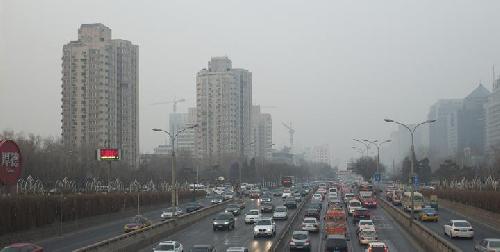One of the great hypocrisies in climate negotiations a decade ago was exempting China from any agreement by giving them "developing nation" status. The rationale was that their emissions were not that high, according to Europe, who had remained fans of nuclear energy and therefore used less fossil fuels.
But scientists knew that policy-makers and activists were using self-reported claims about the emissions. Soon, better measurement techniques began to show giant streams of CO2 coming out of the communist nation and the problem could no longer be denied. When they hosted the Olympics in Beijing, they banned cars for all but wealthy elites and visiting tourists, which made a difference, but isn't really a solution for countries with freedom.
Now the problem can no longer be denied and activists blame the western countries for buying goods from China, but they can only shield the communist nation from blame for so long. The situation is approaching critical. Haze due to weak winds and runaway air pollution is reducing surface solar radiation in China, though in the rest of the world the solar cycle meant higher surface solar radiation (and temperature) since 1990.

In the study, long-term historical meteorological data were combined with relatively short measurements of air pollution particles in China in an innovative way to clarify interactions among the solar radiation, surface wind and air pollution.
The studies have found that lower solar surface radiation in China is due to a combination of higher air pollution in the area and lower surface winds in China. As in other areas in the northern hemisphere, the surface wind in China has been weakened in recent decades. When the wind slows down, the concentration of small particles of air pollution (aerosols) increase, which help increase haze and leads to solar dimming in the area.
More solar dimming with slowing winds
The research reveals that the solar dimming due to air pollution increased significantly during the day in polluted areas in China, when wind speed was lower than 3.5 metres per second.
The study also shows that 20 per cent of the reduced surface solar radiation in China is due to the concentration of small particles of air pollution (aerosols), which is in turn strengthened by 20 per cent by low wind speed.
The effect of solar dimming is a lower influx of sunlight that affects photosynthesis, among other things, and has profound consequences for the climate, the environment and the economy.




Comments